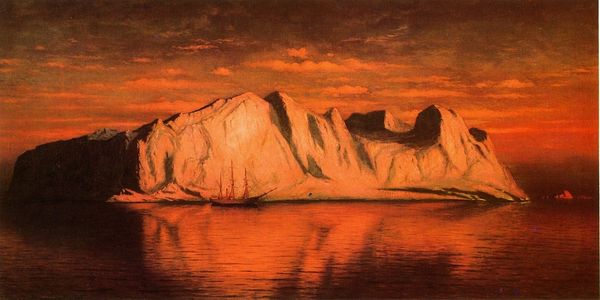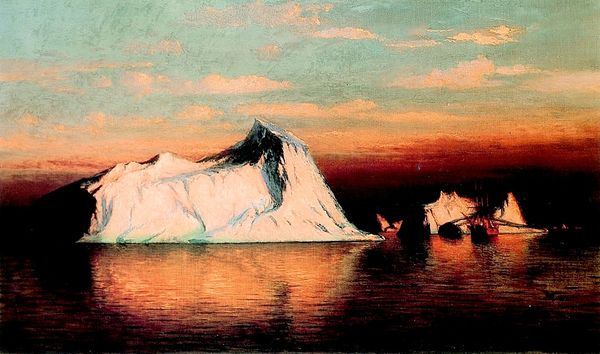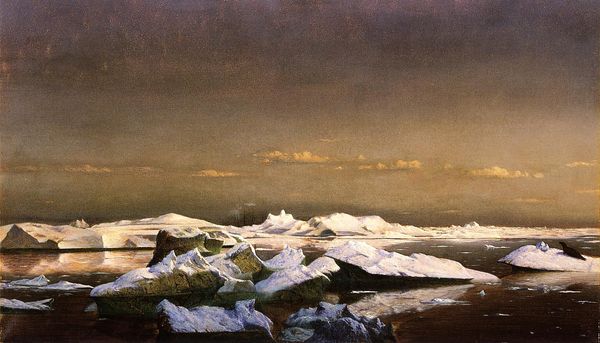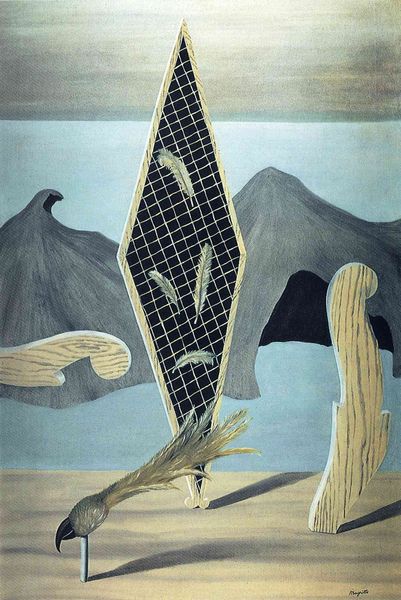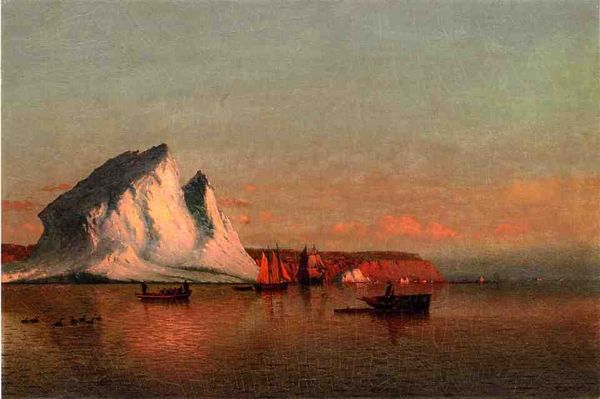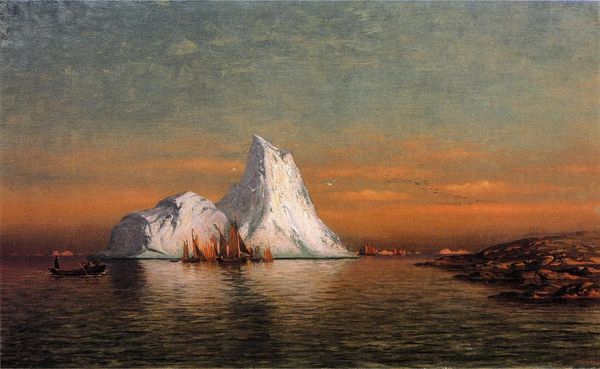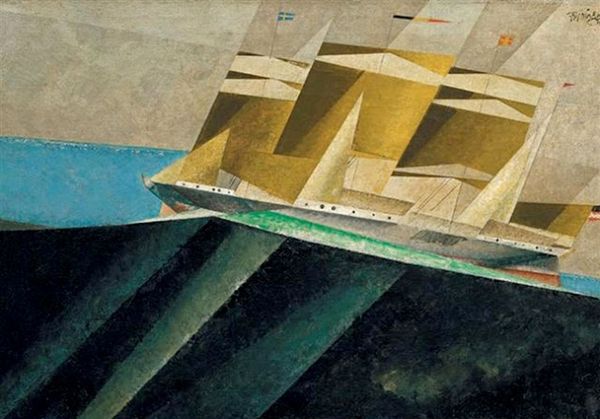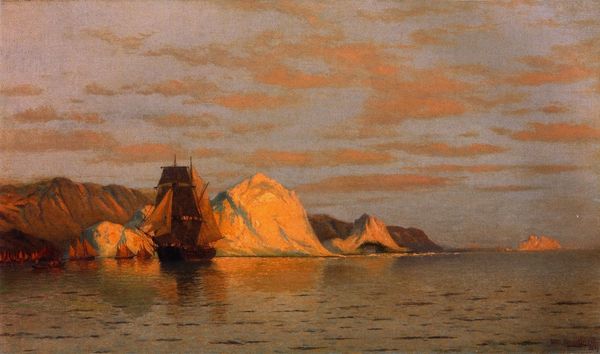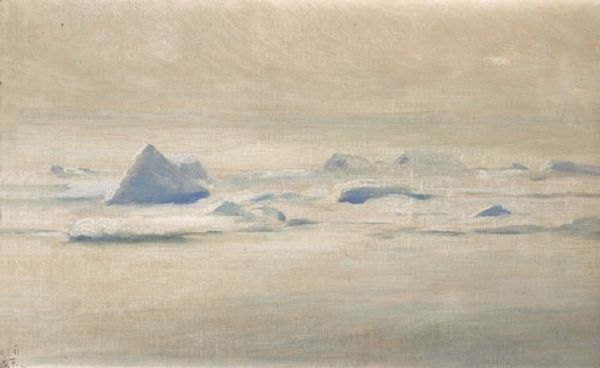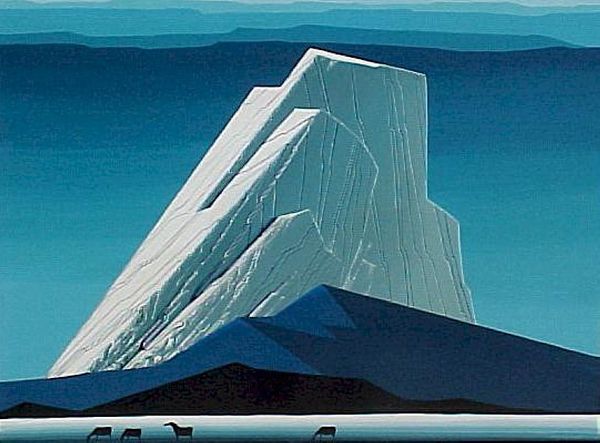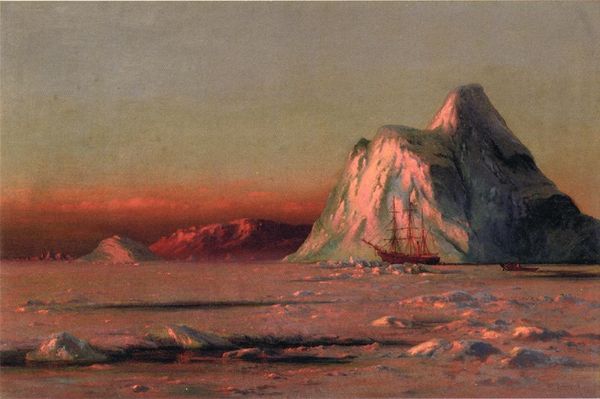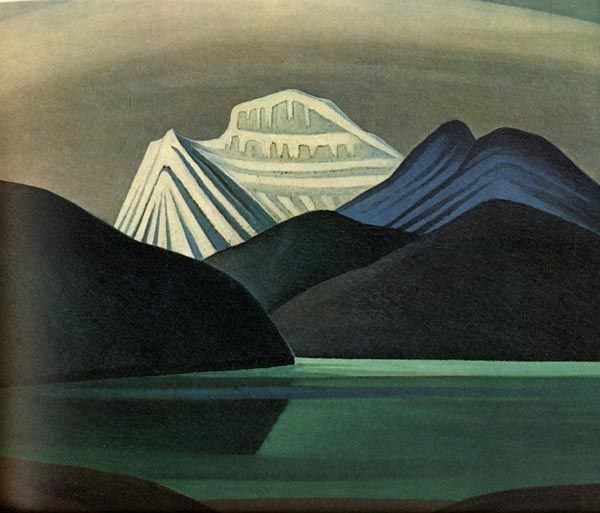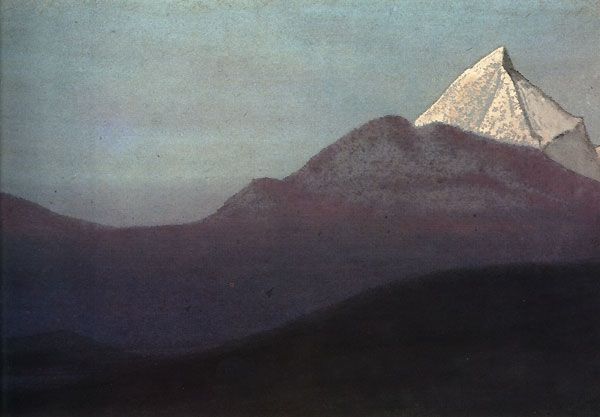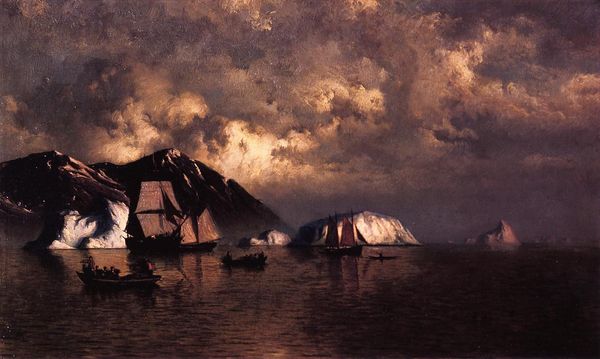
Copyright: Public domain
Editor: This is "Iceberg," painted in 1869 by William Bradford. It’s an oil painting that, at first glance, feels so still, so imposing… almost desolate. It feels huge, but in a very quiet way. What strikes you when you look at it? Curator: The stillness gets me too. I feel as though Bradford isn't simply painting an iceberg, but capturing a profound, quiet moment in time – a frozen echo, if you will. The Hudson River School vibe gives it that grand, almost theatrical scale, yet it’s more than just documentation. What do you think about that light? Does it tell you a story? Editor: The light is muted, kind of melancholic, but it accentuates those layers in the iceberg… the dark bands. I wonder, what are those layers meant to signify? Curator: I think that's it – they're history etched in ice! Each stripe, a whisper from another era. The sheer age of it! I find myself pondering, does Bradford aim to suggest something beyond visual grandeur? Does he allude to time, history or a meditation on our place in this vast world? It is up for debate, don’t you agree? Editor: Definitely! The history embedded in nature makes perfect sense. I initially saw stillness, but now I also see a narrative. Thanks for sharing your thoughts, that shifted my perspective. Curator: And thank you – sometimes a fresh pair of eyes reminds us that even the oldest stories can be seen in a new light. Or perhaps, in a new shade of grey.
Comments
No comments
Be the first to comment and join the conversation on the ultimate creative platform.
